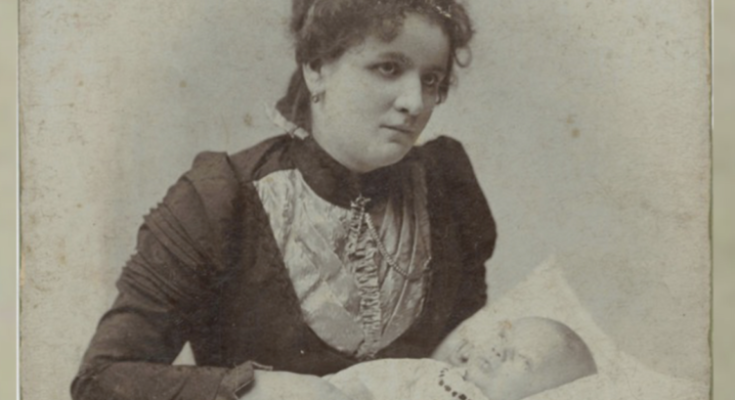
Even if they weren’t meant to, some photographs have the power to chill you down. A seemingly innocent photo might become frightening when examined through the prism of history or removed from context. Why does it seem so eerie? What’s the story behind this?
Cameras have documented events throughout history that elicit curiosity, anxiety, and a plethora of concerns. These spooky photos are not intended to be frightening, but they leave a lasting impression due to their intriguing features or hidden origins.
Sometimes understanding the reality behind them relieves the stress, but other times it simply adds to the mystery. Are you prepared to uncover the narrative behind these unsettling glimpses into the past?
Mountain of bison skulls (1892).

This disturbing photograph, shot in 1892 at the Michigan Carbon Works in Rougeville, Michigan, depicts a tragic event in history. It depicts a massive mound of bison skulls being processed into bone glue, fertilizer, and charcoal. This photograph is troubling because it conveys a tale of a great loss caused by colonialism and industrialization, not only the exploitation of natural resources.
North America had 30 to 60 million bison at the beginning of the nineteenth century. By the time this photograph was shot, the number of wild bison had dropped to a stunning low of 456. The westward spread of settlements, along with market demand for bison skins and bones, sparked a ruthless massacre that devastated the once-thriving herds. Most herds faced decimation between 1850 and the late 1870s, causing significant damage to the environment and culture.
The rising mound of bones in this shot is more than simply a symbol of industrial greed; it also depicts the strong bond between Indigenous Nations and bison, which has been broken by this large-scale tragedy. The bones, heaped like a man-made mountain, blur the distinction between natural and man-made landscapes, creating what photographer Edward Burtynsky subsequently referred to as “manufactured landscapes.”
Today, owing to conservation efforts, around 31,000 wild bison inhabit North America. This snapshot serves as a vivid reminder of how close we were to losing them forever—a sobering insight into a history molded by decisions that still reverberate today.
Inger Jacobsen, Bülow (1954)

This mid-1950s snapshot may appear frightening at first look, but it most likely depicts a typical day in the life of Norwegian singer Inger Jacobsen and her husband, Danish ventriloquist Jackie Hein Bülow Jantzen, better known by his stage name, Jackie Bülow.
Jacobsen was a popular singer in Norway, and she even represented her nation at the Eurovision Song Contest in 1962. Meanwhile, Bülow introduced audiences to his unusual appeal and ability as a ventriloquist at a period when the art form was flourishing, notably on radio and the newly developing medium of television.
The photograph appears to be a picture from a bygone period, a glimpse into a world far different from our own. However, despite its decreasing prevalence, ventriloquism has not entirely disappeared. Ventriloquists’ talent and ingenuity continue to captivate viewers, with three winners of America’s Got Talent: Terry Fator (2007), Paul Zerdin (2015), and Darci Lynne (2017). It demonstrates that, while the world may change, certain traditions endure in surprising ways.
The Sleeping Mummy Trader (1875).

Ancient Egyptian mummies have captivated people’s imaginations for almost 2,000 years. But the way they’ve been treated throughout history tells a fascinating and often scary narrative.
During the Middle Ages, Europeans utilized mummies for a variety of purposes, including grinding them into powder for alleged medicinal remedies, turning them into torches because they burned so brightly, and even treating diseases like coughs and broken bones. This practice was driven by the assumption that mummies were embalmed with healing bitumen, which was not true. By the nineteenth century, the medical value of mummies had faded, but the curiosity continued.
Grave robbers stimulated the demand for mummies, which traders transported from Egypt to Europe and America, where they became cherished belongings of the rich. People presented them as status symbols or used them in research. One of the more odd fads of the 1800s was the “unwrapping party,” in which mummies were ceremonially unwrapped in front of inquisitive bystanders, blurring the lines between science and entertainment.
This photograph of a trader relaxing amidst a cache of mummies exemplifies how these ancient objects became commodities, used for anything from medical experimentation to drawing-room spectacles. It serves as a reminder of how cultural riches were treated in the past and why their preservation is critical now.
The Iron Lungs (1953)

Prior to immunizations, polio was one of the world’s most dreaded illnesses, crippling or killing thousands each year. In the United States, the 1952 outbreak was the deadliest, with approximately 58,000 cases documented, leaving over 21,000 individuals disabled and 3,145 people dead; the majority of them were children. Polio did not directly injure the lungs but rather targeted motor neurons in the spinal cord, cutting off communication between the brain and the muscles required to breathe.
Often, the sickest patients were confined to an iron lung, a mechanical respirator that forced air into their paralyzed lungs. Hospitals held rows upon rows of these tall, cylindrical devices, each full of youngsters struggling for their lives. A single image of these “mechanical lungs” is enough to convey the devastation caused by polio, a terrible reminder of the terror and uncertainty that gripped families before the vaccine’s introduction in 1955.
Even for those who managed to escape the iron lung, their lives were forever altered, with many experiencing long-term impairments. However, the image above—rows of iron lungs stretching eternally—demonstrates both the human cost of the disease and the tenacity of those who tried to eradicate it.
A young woman with her deceased kid (1901)

The sad portrait of Otylia Januszewska embracing her recently departed son, Aleksander, conveys a poignant moment of loss while also referencing the Victorian practice of post-mortem photography. This technique, which gained popularity in the mid-nineteenth century, was used to commemorate the departed and maintain a final, tangible link to loved ones, particularly when the reality of death became too much to bear.
Reflecting on death has a long history, dating back to the concept of memento mori, which means “remember you must die.” During the Middle Ages, artworks frequently contained reminders of mortality, and older civilizations developed trinkets representing skeletons, providing a gloomy but essential acknowledgement of life’s fragility.
When photography first appeared in the nineteenth century, it was the ideal medium for personalizing and intimately reflecting on these experiences. Families, now able to snap pictures, would immortalize their departed loved ones in an attempt to grasp onto them, keeping their faces permanently visible. It allowed the living to mourn, but it also helped to form a permanent tie, a sense of connectedness beyond death.
Interestingly, when a loved one dies, we generally focus on celebrating their life rather than the sad truth of their death—as if it’s forbidden to discuss it openly. In sharp contrast, Victorians accepted death wholeheartedly, including it in rites that acknowledged its unavoidable existence.
Post-mortem photography, which peaked in the 1860s and 1970s, was an important element of it. It began in the 1840s with the introduction of photography, and while not all Victorians were comfortable with photographing the deceased, the practice expanded rapidly, particularly in the United Kingdom, the United States, and Europe.
A nine-year-old industrial worker in Maine (1911)

In 1911, life for many working-class families in America revolved around hard labor, long hours, and making ends meet in any way possible.
Nan de Gallant, a 9-year-old girl from Perry, Maine, spent her summers working at the Seacoast Canning Co. in Eastport, Maine. She wasn’t skipping across fields or playing with pals; she was helping her family haul sardines, working long hours with her mother and two sisters.
Child labor was tragically widespread in early twentieth-century America, particularly in industries such as canning, textiles, and agriculture. Every additional set of hands was beneficial to families. However, for children like Nan, it meant giving up their childhood. By the age of nine, she was already working, which was unfortunately common for youngsters her age at the time. According to the US Bureau of Labor Statistics, 18% of children aged 10 to 15 worked in 1910.
In Maine, a regulation prohibiting minors under the age of 12 from working in manufacturing existed, but it did not apply to canning enterprises, which produce perishable commodities. That legislation changed in 1911, but it’s unclear how much it affected the lives of children like Nan.
James Brock dumps acid into the pool (1964).

In 1964, a disturbing photograph showed motel manager James Brock pouring muriatic acid into the Monson Motor Lodge pool to discourage Black swimmers from using it.
This crime occurred after a group of Black activists attempted to integrate the segregated space in St. Augustine, Florida. Instead of allowing equality, Brock destroyed the pool.
Charles Moore captured the photograph, which represents the deep-rooted bigotry of the time as well as the courage of people fighting for civil rights. Today, it reminds us of how far we’ve come and how far we have to go in the fight for equality. It teaches us about resilience, the power of resistance, and the importance of facing painful facts about our past.
Coal miners return from the depths (c. 1900).

In the early 1920s, Belgian coal miners worked in perilous conditions underground to feed the burgeoning industrial revolution. After hours of arduous labor in the dark, they would squeeze together in a crammed elevator, finally reaching the light of day. The elevator’s creaking and their soft words showed how much they depended on each other to get through it.
Their cheeks, plastered with coal dust, revealed stories of toil and sacrifice. Every wrinkle and crease revealed the toll the job had on them, but it also highlighted their joy in their work. These guys powered the industries that kept everything going, even if it meant jeopardizing their health and safety.
When they eventually emerged into daylight, it was a sharp reminder of the difference between the blackness of the mines and the light above. More importantly, it served as a reminder of their strength and tenacity. They had each other, and they kept going. Their camaraderie, formed through shared difficulties, was the core of their community; they faced obstacles together, no matter what.
Alvin Karpis’s fingers (1936)

Alvin “Creepy” Karpis, a legendary criminal from the 1930s, was a member of the Barker gang and engaged in high-profile kidnappings. After leaving fingerprints on two big crimes in 1933, he attempted to conceal his identity.
In 1934, he and fellow gang member Fred Barker had cosmetic surgery by Chicago underworld doctor Joseph “Doc” Moran. Moran changed their noses, chins, and jaws, and used cocaine to numb their fingers before removing their fingerprints.
Despite these attempts, Karpis was apprehended in New Orleans in 1936, convicted to life in jail, and served more than 30 years, including time at Alcatraz. He was granted parole in 1969.
Halloween Costumes in 1930

During the Great Depression, as violence and vandalism rose, towns began to develop traditions such as candy distribution, costume parties, and haunted homes to deter disruptive conduct. This era also saw a broader range of costume options for youngsters, which added to the excitement of the celebrations.
Two guys building a death mask (about 1908)

Death masks have long been used to retain the appearance of the deceased. Ancient Egyptians, for example, built intricate masks to aid the deceased in their journey to the afterlife. Similarly, ancient Greeks and Romans created sculptures and busts of their forefathers, laying the groundwork for the death masks that would follow.
What distinguished death masks from other portrayals was their emphasis on realism. Unlike idealized sculptures, these masks were supposed to capture the person’s actual features, resulting in a lasting homage. Famous personalities such as Napoleon, Lincoln, and Washington had death masks produced, which were subsequently utilized to create monuments and busts that memorialized them long after they died.



